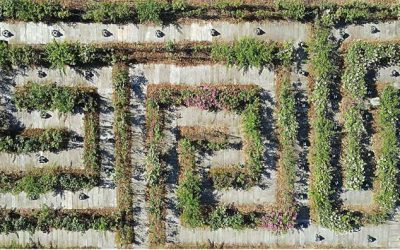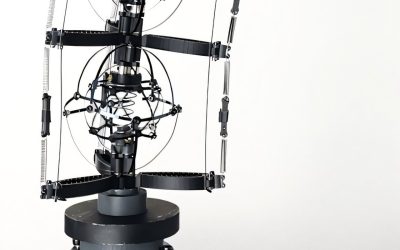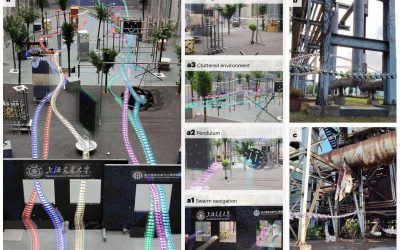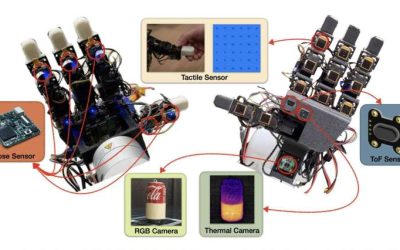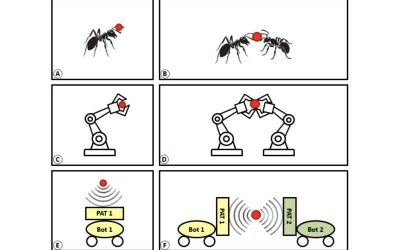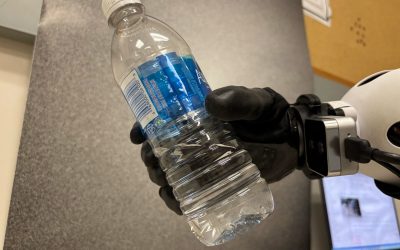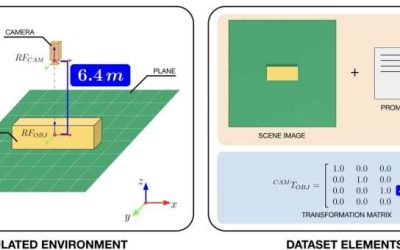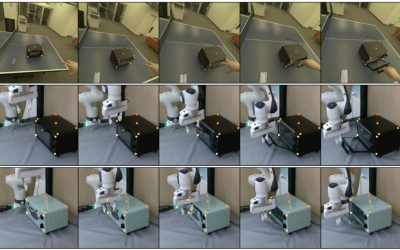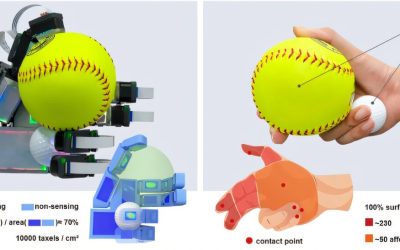For robots to be successfully introduced in a wider range of real-world settings, they should be able to safely and reliably navigate rapidly changing environments. While roboticists and computer scientists have introduced a wide range of computational techniques for...
Robotics
New scrubbing robot could contribute to automation of household chores
While the advent of robotic systems that can complete household chores has been widely anticipated, those commercially released so far are primarily robot vacuums that autonomously clean the floor. In contrast, robots that can reliably clean surfaces, tidy up, cook or...
New approach allows drone swarms to autonomously navigate complex environments at high speed
Unmanned aerial vehicles (UAVs), commonly known as drones, are now widely used worldwide to tackle various real-world tasks, including filming videos for various purposes, monitoring crops or other environments from above, assessing disaster zones, and conducting...
Dexterous robotic hand integrates thermal, inertial and force sensors
While roboticists have introduced increasingly advanced systems over the past decades, most existing robots are not yet able to manipulate objects with the same dexterity and sensing ability as humans. This, in turn, adversely impacts their performance in various...
New system allows acoustic robots to co-operatively transport objects
While so far robots have predominantly been deployed individually, as teams, they can tackle a wider range of complex missions with remarkable speed and efficiency. For instance, they could help to rapidly transport objects to target locations, moving on varying...
Vision-language model creates plans for automated inspection of environments
Recent advances in the field of robotics have enabled the automation of various real-world tasks, ranging from the manufacturing or packaging of goods in many industry settings to the precise execution of minimally invasive surgical procedures. Robots could also be...
New system reliably controls prosthetic hand movements without relying on biological signals
The loss of a limb following an injury, accident or disease can greatly reduce quality of life, making it harder for people to engage in daily activities. Yet recent technological advances have opened new exciting possibilities for the development of more comfortable,...
Vision-language models gain spatial reasoning skills through artificial worlds and 3D scene descriptions
Vision-language models (VLMs) are advanced computational techniques designed to process both images and written texts, making predictions accordingly. Among other things, these models could be used to improve the capabilities of robots, helping them to accurately...
Training robots without robots: Smart glasses capture first-person task demos
Over the past few decades, robots have gradually started making their way into various real-world settings, including some malls, airports and hospitals, as well as a few offices and households.
Bio-mimetic robotic hand seamlessly integrates tactile feedback to outperform predecessors
Over the past decades, roboticists have developed increasingly advanced systems that can emulate some human capabilities and effectively tackle various real-world tasks. To reliably grasp, manipulate and utilize objects in their surroundings, robots should be able to...

